 I have to admit to a fondness for the colors of autumn. I find that I look for excuses to go flying when the trees put on their all-too-brief displays before the iron of winter clamps down. I find that I’m not alone in my compulsion, as the virtual airport has been busy the last few weeks because the weather has been good and this fall’s spectacle has been among the best of the last several years. Fortunately, a goodly number of the pilots who had gone flying on this afternoon stuck around for coffee and saving the world via conversation in the pilot’s lounge after aviating. As the sun set, the topics discussed moved into the current problems with aviation insurance and an idea for pilots to take action on their own to further reduce their risks.
I have to admit to a fondness for the colors of autumn. I find that I look for excuses to go flying when the trees put on their all-too-brief displays before the iron of winter clamps down. I find that I’m not alone in my compulsion, as the virtual airport has been busy the last few weeks because the weather has been good and this fall’s spectacle has been among the best of the last several years. Fortunately, a goodly number of the pilots who had gone flying on this afternoon stuck around for coffee and saving the world via conversation in the pilot’s lounge after aviating. As the sun set, the topics discussed moved into the current problems with aviation insurance and an idea for pilots to take action on their own to further reduce their risks.
Insurance Costs Are Up…
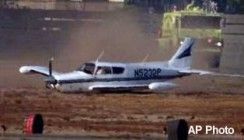 I heard a lot of complaining about insurance prices. Fortunately, Armand Vilches was in attendance. He’s an insurance broker and has been in the aviation insurance market for many years. He buys insurance for his club’s airplane and renter’s insurance for himself, giving him a good perspective on both sides of the subject. He was able to calm down some of the more fevered brows who have decided that the price increases are all a conspiracy by some group or another to either make huge sums of money or finance the continuing cover-up of the Kennedy assassination. It’s just capitalism, which has been good to all of us, but it’s not fun when we’re the ones in the wrong end of the market. He calmly pointed out that, in the last 10 years, the aviation insurance companies only made a profit in 1993, one went bankrupt and another is in shaky condition. The insurers simply cannot afford to keep losing money when they only have a small market of about 200,000 airplanes to insure, so rates are climbing and available coverage is diminishing. He also pointed out that the passage of the General Aviation Revitalization Act and tort reform in most of the states, in the wake of some outlandish jury verdicts in aviation, has radically reduced the number of aviation lawsuits, so the rate at which prices have been increasing may slow down.
I heard a lot of complaining about insurance prices. Fortunately, Armand Vilches was in attendance. He’s an insurance broker and has been in the aviation insurance market for many years. He buys insurance for his club’s airplane and renter’s insurance for himself, giving him a good perspective on both sides of the subject. He was able to calm down some of the more fevered brows who have decided that the price increases are all a conspiracy by some group or another to either make huge sums of money or finance the continuing cover-up of the Kennedy assassination. It’s just capitalism, which has been good to all of us, but it’s not fun when we’re the ones in the wrong end of the market. He calmly pointed out that, in the last 10 years, the aviation insurance companies only made a profit in 1993, one went bankrupt and another is in shaky condition. The insurers simply cannot afford to keep losing money when they only have a small market of about 200,000 airplanes to insure, so rates are climbing and available coverage is diminishing. He also pointed out that the passage of the General Aviation Revitalization Act and tort reform in most of the states, in the wake of some outlandish jury verdicts in aviation, has radically reduced the number of aviation lawsuits, so the rate at which prices have been increasing may slow down.
…Available Coverage Is Down
The conversation then moved to an area of insurance that is a very serious problem for pilots: insurance policies with sublimits. Old Hack brought it up. He said that he had just renewed the insurance on his Super Cruiser. In the past he had always purchased a $1,000,000 “smooth” policy. Hack is not wealthy, but has some savings, the airplane, a decent house, some toys and a car for his wife and himself. He doesn’t want to risk losing everything if he has an accident. While the Super Cruiser only carries a maximum of two passengers, an accident with some injuries could mean a lawsuit worth hundreds of thousands of dollars, at least. Carrying a million dollar, smooth policy had always been enough to protect him, but not so much that it made him a “target.” This year his regular insurer was unwilling to write a smooth policy, insisting on a million dollars of coverage with $100,000 sublimits. That means there is only $100,000 available per person that is injured or killed.
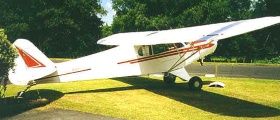 Hack was furious. He knows that such a policy is only marginally better than going uninsured. If he seriously injures or kills a passenger, the insurance company can pay its $100,000 limits and walk away, leaving him on the hook for what is probably going to be several hundred thousand dollars of additional liability. In fact, if the plaintiff accepts the limits payment, in most cases the insurance company is no longer obligated to pay for a lawyer to defend Hack at trial. Hack had his agent shop the market aggressively, only to discover that there was no insurer willing to write a million dollar smooth policy on a Super Cruiser. He had no choice but to buy the sublimits policy. He knows he is seriously underinsured and, frankly, it worries him.
Hack was furious. He knows that such a policy is only marginally better than going uninsured. If he seriously injures or kills a passenger, the insurance company can pay its $100,000 limits and walk away, leaving him on the hook for what is probably going to be several hundred thousand dollars of additional liability. In fact, if the plaintiff accepts the limits payment, in most cases the insurance company is no longer obligated to pay for a lawyer to defend Hack at trial. Hack had his agent shop the market aggressively, only to discover that there was no insurer willing to write a million dollar smooth policy on a Super Cruiser. He had no choice but to buy the sublimits policy. He knows he is seriously underinsured and, frankly, it worries him.
A couple of other pilots didn’t know the difference between smooth policies and ones with sublimits. When it was explained to them, they were aghast. They were also shocked to find out that their policies had sublimits and upset that their brokers hadn’t explained sublimits to them.
When the wave of indignation settled down, Hack looked at me and said that he figured he either had to stop flying because he couldn’t stand the financial hit if he had an accident while underinsured, or he had to make certain he never had an accident. As he talked, I recalled something I’d read some years ago, and I realized that some of the pilots I fly with regularly had figured out a good way to better protect themselves. They were buying what amounted to additional “insurance” albeit in a slightly different form. They took aggressive, intelligent action to reduce their risk of having an accident. Twice a year each of them spent a half a day with an instructor for recurrent training.
Training As Additional “Insurance”
Substantial data on accidents has been generated over the years. Each year one conclusion becomes more and more vivid: Pilots who undergo recurrent training on a regular basis are far less likely to have accidents. That’s why the segments of general aviation that involve pilots who undergo recurrent training, primarily those flying corporate airplanes, are so incredibly safe. Part 135 pilots have six-month checks and have a decent safety record. Flight instruction, which is essentially ongoing recurrent training, has a low accident rate. The lousy accident rate is in those parts of general aviation where the pilots are only required to get a flight review every 24 months.
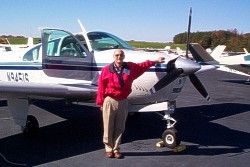 A reasonable conclusion is that a good session with a flight instructor every six months is inexpensive, extra “insurance.” While it certainly won’t replace a good policy, it will definitely reduce your risk if you are stuck with one of those sublimit policies. Some brokers also tell me that it may make the difference as to whether you can buy a smooth policy. On top of that, it’s cheap. You are going to fly for an hour and a half or two hours every six months anyway, so spend an extra hundred bucks twice a year on the instructor you like and trust to keep your skills shiny. In the great scheme of things, that’s very inexpensive. Especially if it means you don’t have an accident…
A reasonable conclusion is that a good session with a flight instructor every six months is inexpensive, extra “insurance.” While it certainly won’t replace a good policy, it will definitely reduce your risk if you are stuck with one of those sublimit policies. Some brokers also tell me that it may make the difference as to whether you can buy a smooth policy. On top of that, it’s cheap. You are going to fly for an hour and a half or two hours every six months anyway, so spend an extra hundred bucks twice a year on the instructor you like and trust to keep your skills shiny. In the great scheme of things, that’s very inexpensive. Especially if it means you don’t have an accident…
I keep thinking of what Richard Bach went through in the mid-1960s when he tried to buy insurance for the barnstorming he did and later immortalized in the wonderful book, Nothing By Chance. His broker simply could not get coverage for a biplane hauling passengers from alfalfa fields. Anywhere. Bach decided that his response would be to know his airplane so well and to keep his skills at such a high level that he would reduce his risk of an accident as far as humanly possible. He went out and flew his Parks biplane until he knew just how it would behave in all circumstances. He knew just what kind of field he had to have to operate safely. He was ruthless with himself in keeping his skills up. He refused to land in fields that did not meet his standards for safety. Flying a very old airplane, the results were predictable – he had a number of engine failures and mechanical problems – but he never scratched a passenger nor did he ever scratch the airplane when he had a passenger aboard.
In this day and age we cannot reasonably go without insurance in general aviation, but we can certainly augment it by doing as Dick Bach did, knowing our airplanes and ourselves intimately and recognizing that skills atrophy at a shockingly fast rate. The solution is to take dual. Regularly. I strongly recommend every six months.
Ok, you have agreed to have a session with your instructor every six months, now what?
Customizing Your Recurrent Training
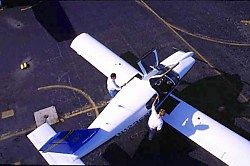 In my opinion, the “what” is something you work out with your CFI. I think it should be an instructor that you know or are willing to fly with regularly who you get to know and who gets to know you. A good session of recurrent training should be an exercise in give and take. You are buying the expertise of an instructor who is going to be objective and help you improve, who can spot weaknesses and work with you to replace them with strengths and who is going to challenge you to generally become a better pilot. You are going to provide the instructor with insight into the types of flying you do so that the instructor can more carefully tailor the sessions to meet your specific needs.
In my opinion, the “what” is something you work out with your CFI. I think it should be an instructor that you know or are willing to fly with regularly who you get to know and who gets to know you. A good session of recurrent training should be an exercise in give and take. You are buying the expertise of an instructor who is going to be objective and help you improve, who can spot weaknesses and work with you to replace them with strengths and who is going to challenge you to generally become a better pilot. You are going to provide the instructor with insight into the types of flying you do so that the instructor can more carefully tailor the sessions to meet your specific needs.
For example, do you usually fly level from here to there and then shoot an approach? Are you one who flies on nice days, usually locally, with occasional VFR cross countries, including the annual pilgrimage to Oshkosh or a vacation to where it’s warm? What kind of airplanes do you usually fly? What sort of loads? Let the instructor get to know you; you might be surprised how a little fine-tuning of your skills makes your flying significantly more enjoyable. You may discover that crosswinds have a little less terror, or that stalls aren’t all that bad so you don’t have to tack on twenty extra knots on final because you are afraid you’ll stall the airplane otherwise.
Some Suggestions
I suggest your regular session of recurrent training might go something like this:
1. Schedule and make the initial plan. Call up the instructor and set a date to fly. Set aside a full morning or afternoon, about four hours. Discuss generally what you will cover so that you can be thinking about things ahead of time. I’ve always found that a pilot who thinks about flying between times he or she is flying does much better when it is time to fly. Perhaps the brain is kept in a primed mode, so to speak.
2. Talk. When you get together, talk about the flying you have been doing, the concerns you have and questions that have arisen since your last session with the instructor. I suggest that the next step is for the instructor to quiz you on the systems of the airplane you are flying regularly, particularly the electrical and fuel systems. Those are areas most pilots don’t even think about in between sessions of dual. I recommend that a review session be set up to make sure the pilot knows the systems and how to deal with anomalies or emergencies. Then make sure the pilot can recite the memory sections of emergency checklists. The chances are the pilot hasn’t looked at one in the last six months, it’s just one of those areas that does not get practiced. For an engine fire, for example, when I give recurrent training, I expect at least that the pilot will know to shut the fuel off and whether the cabin air vents should be open or closed (it varies with type of airplane). I also suggest you review airspace because there seems to be a tendency to forget the details. I don’t want you retaining my services as an aviation attorney because you were a little foggy on airspace, wandered into somewhere you shouldn’t have been and the FAA is coming after you for an airspace violation.
Once you have reviewed such other areas as you and your instructor feel are important to the session, then map out what both of you will do in the airplane. Bring up things that you want to review in flight. It’s not possible to do everything, but a little work will allow the two of you to choreograph the flight a little so you can do as much as you can as efficiently as possible. Airplanes aren’t cheap to operate; I suggest that a good instructor will respect your time and money in the airplane. I do feel that choreographing a lesson is not cheating even though the “student” generally knows what is going to happen. Okay, the pilot isn’t “surprised” so it’s not “real.” That’s absolutely true, but irrelevant, because this is training and the idea is to do things right, to work on the habit patterns of correct behavior. Yes, if the instructor gives an engine failure when the student knows it is coming, the student will probably get it right. That creates a number of positive things, not the least of which is the experience of doing things correctly. When it happens for real, doing it right in the past means the chance of doing it right when the fat is in the fire is much higher. (Plus, the majority of pilots will tell you that they had some sort of warning before their “real” engine failures.) Finally, before launching, I suggest that you agree on specific performance parameters in terms of altitude, airspeed and heading deviations so that if the pilot has some difficulty with an evaluation that is other than hard numbers, the instructor has hard numbers to which to refer.
3. Fly. For instrument-rated pilots the review normally means the majority of the time will be under the hood. I suggest that it should concentrate first on things that the pilot doesn’t do regularly, such as slow flight, maneuvering, stalls and unusual attitudes or upsets before getting into approaches. In addition, I suggest some VFR practice at an airport with short runways. If possible, take a practiced forced landing all the way to touchdown. Take advantage of the meanest crosswind you can locate for landings and land out of most of the instrument approaches. I suggest that you try to avoid canceling a session for weather unless it is due to thunderstorms or ice, as my personal opinion is that real-world practice is quite valuable. If you, the pilot, are a VFR-only pilot, and the day is marginal VFR, seriously consider flying if the instructor feels it can be done safely as it gives you a chance to see just how crummy marginal VFR can be under circumstances when you have someone along who can bail you out if you get into trouble.
4. Evaluate. After the flight, I suggest you and your instructor separate and write an evaluation of the flight. I’m very serious about taking the time to write it up; it makes a difference and focuses your attention on the matter very effectively. I also suggest writing out some numbers: the shortest runway that the pilot should use with that airplane on a warm day and the maximum crosswind the pilot should be willing to accept with that airplane. For instrument pilots I suggest numbers that are appropriate personal minima for you, the pilot, for day and night precision, non-precision and circle-to-land approaches. Then compare the evaluations. I believe that evaluations should track closely. If they don’t, it should be a red flag to both parties. Either the pilot has some difficulty with self-evaluation (I’ve seen too optimistic and too pessimistic) or the instructor has missed the boat with this pilot. If it happens, I usually suggest the pilot fly with another instructor for a cross-check of my evaluation; I’ve certainly been wrong in the past and I know I haven’t made all of my mistakes, yet.
5. Make an appointment for another review session. Don’t mess around, pull out your calendars and set the next time so that you will actually get together and fly.
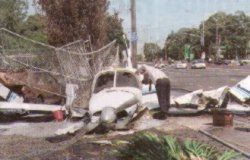 We are faced with difficulties in aviation insurance, notably with a lack of available coverage. We have to be aggressive in reducing our risks. In my opinion, the best way, and least expensive, is to take flight instruction every six months. It means you get a flight review signoff and an IPC approved if the session goes well, plus, because you are now on a regular recurrent training program, you may get a lower rate on your premium because you are a better risk. After all, for quite a while there were no fatal accidents involving pilots who were current in the FAA Wings program. That’s a powerful indicator of the value of recurrent training.
We are faced with difficulties in aviation insurance, notably with a lack of available coverage. We have to be aggressive in reducing our risks. In my opinion, the best way, and least expensive, is to take flight instruction every six months. It means you get a flight review signoff and an IPC approved if the session goes well, plus, because you are now on a regular recurrent training program, you may get a lower rate on your premium because you are a better risk. After all, for quite a while there were no fatal accidents involving pilots who were current in the FAA Wings program. That’s a powerful indicator of the value of recurrent training.
Yes, going for dual can be uncomfortable to consider, but the increased level of confidence you will have when you finish is far more powerful than the negative feelings you may have going in. Call your instructor and make that appointment now. You’ll be very glad you did.
See you next month.


































